Overbought and Oversold in trading - indicator for analysis
In many of the author’s books, we are often told that the price that we can observe in the form of a chart is the result of the battle between the Bulls and the Bears.
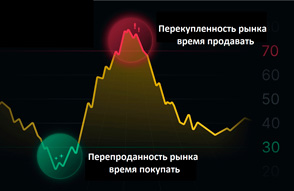
Indeed, if you look at the market and throw away all the terminology, you understand that the price is formed by both the demand that comes from buyers and the supply from sellers.
In fact, the result of such mutual cooperation, and maybe often competition of both parties, leads to the formation of a schedule. Why do you ask the competition?
Yes, everything is very simple, imagine that a trader is an ordinary trader on the market. What are sellers trying to do? Sell as expensive as possible, and the buyer tries to buy as cheap as possible.
Usually at such moments you can observe a price break, or a retreat into sideways movement ( flat ), to decide whose financial flow will move the price in a certain direction. However, such a turning point does not have to happen immediately, because the market is, first of all, people who doubt whether they should exit the asset or, on the contrary, buy more.
Such zones occur when the market begins to slow down and tends to reverse and are called overbought and presold zones.
Overbought is a unique moment when there are fewer and fewer people on the market who want to continue buying an asset, and more and more people who want to sell at a new maximum price. Often on the chart this zone is expressed as a slowdown in price, and before this the formation of a new local maximum.
Oversold - characterized by a slowdown in the market, as there are fewer and fewer people willing to sell the asset, and there are more and more buyers who want to buy the asset at a new lower price. Often this zone can be seen after a new local low has formed, followed by a strong price slowdown or entry into a sideways movement.
Practical application of Overbought and Oversold in trading
Now let's talk about what these zones can give us and how to identify them. To begin with, searching for these zones is a unique opportunity to make money on a pullback or even a price reversal. Often, in order to find them, traders use various technical indicators, or, more precisely, oscillators.
So, for example, the stochastic or rsi indicator is directly designed to search for such zones. For example, if we take into account Stochastic, then the overbought zone is considered when the indicator line is in the zone from 80 to 100.
You can see the resale zone if the indicator line is between 0 and 20. I think you don’t need to explain that it is here that we are opening the sale transaction, and in the purchase zone. You can see an example of these entry points in the picture below:
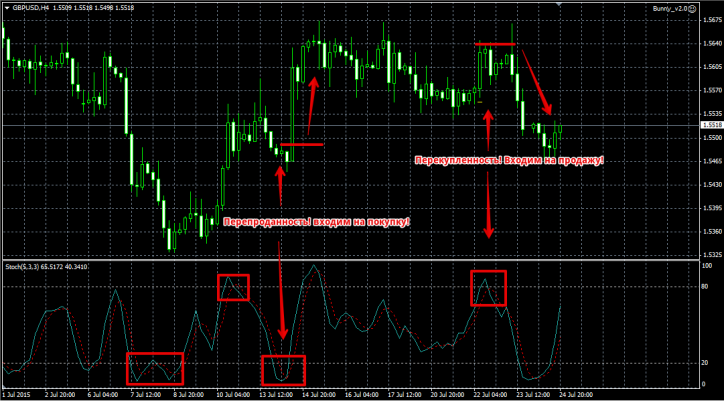 If you use the RSI indicator , you can find the overbought zone if the indicator line is in the range from 70 to 100, and the oversold zone can be observed if the indicator line is in the range from 0 to 30.
If you use the RSI indicator , you can find the overbought zone if the indicator line is in the range from 70 to 100, and the oversold zone can be observed if the indicator line is in the range from 0 to 30.
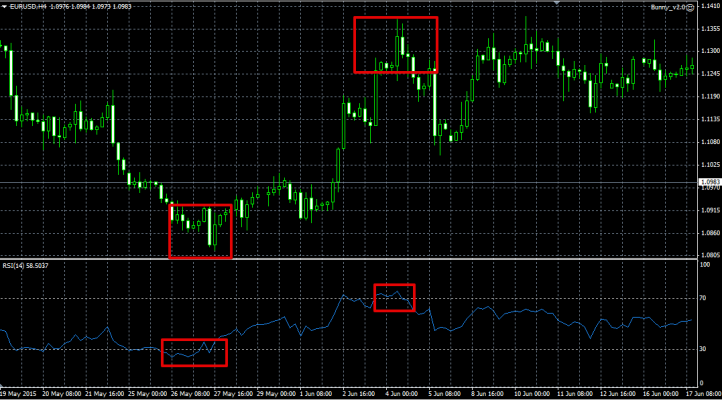
It is also not necessary to use various indicators to search for such zones. A simple way to do this is by observing the chart of a currency pair. If you notice a slowdown in an asset, and it, in turn, begins to move sideways, then with a high probability we can say that this is either an overbought or oversold zone.
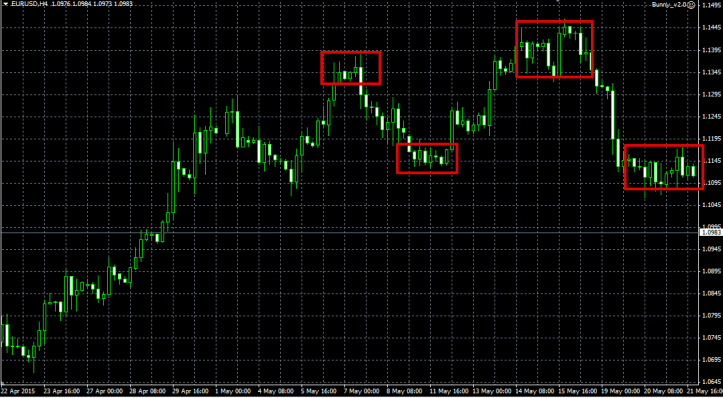
However, when working with these zones, there are pitfalls that for some reason no one wants to tell you about. It often happens that the price seems to have reached a new high, then, as if on tracing paper, there was a slowdown and an indefinite movement to the side.
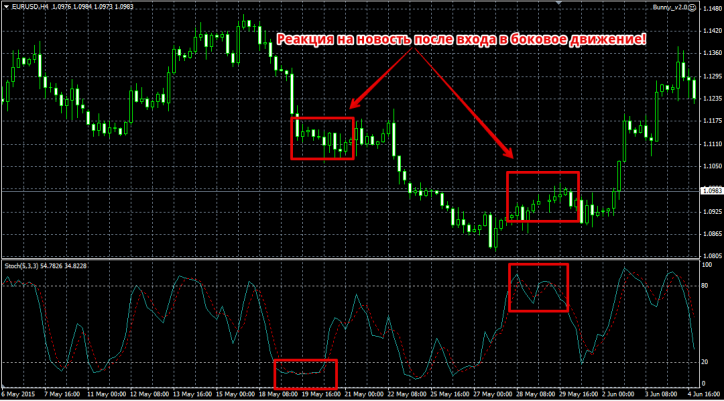
By all indications, you have an overbought zone and it would be worth selling, but perhaps at this moment positive news came out (positive economic indicators, report) and buyers, having gained strength in a small sideways movement based on this news, will begin to buy the asset en masse, assuming that it will continue to grow.
Moreover, the same picture will apply to the indicators that are used to search for these zones. To avoid such situations, use the economic calendar and try not to enter a position during the publication of strong news.
An even better option would be if your assumption about a price reversal is supported by positive or negative news. Thank you for your attention and use the acquired knowledge wisely. Good luck!
